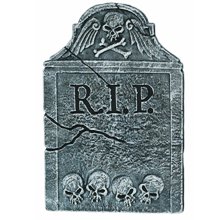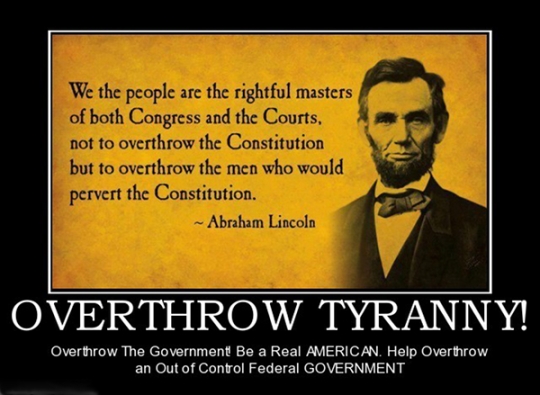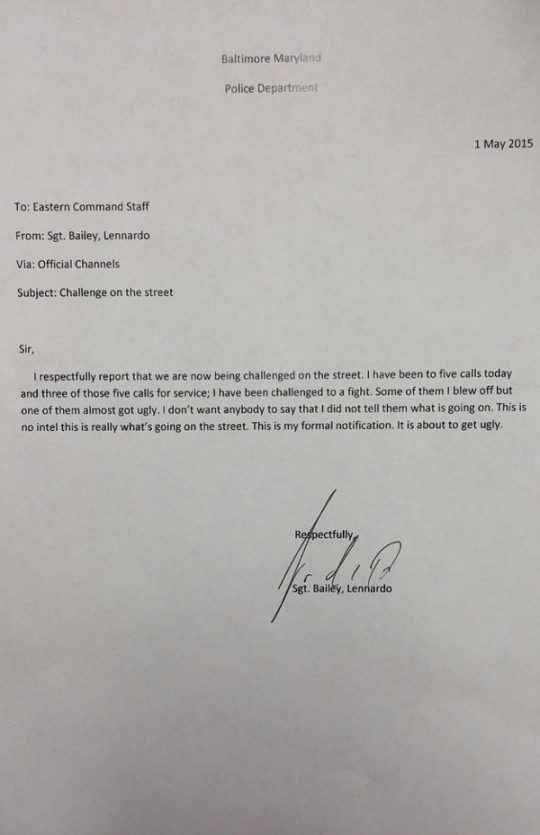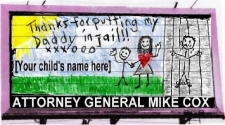 Of the 2.2 million people incarcerated in the United States, about half are parents, and at least 1 in 5 has a child-support obligation. For most, the debt will keep piling up throughout their imprisonment: By law or by practice, child-support agencies in much of the country consider incarceration a form of “voluntary impoverishment.” Parents like Harris, the logic goes, have only themselves to blame for not earning a living. But that may be about to change.
Of the 2.2 million people incarcerated in the United States, about half are parents, and at least 1 in 5 has a child-support obligation. For most, the debt will keep piling up throughout their imprisonment: By law or by practice, child-support agencies in much of the country consider incarceration a form of “voluntary impoverishment.” Parents like Harris, the logic goes, have only themselves to blame for not earning a living. But that may be about to change.

What does this tell you about overdue child support?
Republicans opposed to new regulations
The Obama administration has authorized a new set of regulations that would reclassify incarceration as “involuntary,” giving parents the right to push the pause button on child-support payments. The regulations are set to be published early next year and implemented by states by 2017.
Congressional Republicans oppose the new policy. They argue that it would undercut the 1996 welfare reform act, which pressed states to locate missing fathers and bill them for child support so taxpayers wouldn’t bear the full burden of their children’s welfare. (What idiots, the debt can’t be paid anyway.)
“I am fundamentally opposed to policies that allow parents to abdicate their responsibilities, which, in turn, results in more families having to go on welfare,” Senate Finance Committee Chairman Orrin Hatch, R-Utah, said in a speech in June on the Senate floor. Obama’s new regulations, he said, “would undermine a key feature of welfare reform, which is that single mothers can avoid welfare if fathers comply with child-support orders.”
Frances Pardus-Abbadessa, head of child-support enforcement for New York City, said: “The complaint we often hear is, ‘Why should incarcerated fathers, of all people, be the ones to get a break from their obligations — and at a cost to the taxpayer?’ “
Administration officials and their supporters counter that billing fathers while they’re in prison does little but dig them deeper into debt.
“Billing poor fathers doesn’t help poor mothers and kids become less poor,” said Jacquelyn Boggess, a poverty expert with the Center for Family Policy and Practice.
“All it creates,” she said, “is a highly indebted individual.”
Debt piles up
For Earl Harris, the problem was keeping up. He had a job in prison, cleaning the kitchen, but it paid only $7.50 a month — well short of the $168 the state of Missouri was billing him.
“Didn’t they know I was in prison?” he asks. “Weren’t they the ones that put me in there?”
When he got out in 2001, the unpaid amount was listed on his credit report — and pursued by an agency with the power to garnish 65 percent of his wages, intercept his tax returns, freeze his bank account, suspend his driver’s license and, if he failed to pay, lock him up again. By then, his debt had surged to more than $10,000.
Harris entered barbering school but soon returned to drug dealing and was thrown back into prison for nearly a decade. Meanwhile, his child-support debt swelled to more than $25,000.
Incarceration currently deemed ‘voluntary’
Harris’s plight is not unusual. The Marshall Project interviewed nearly three dozen noncustodial parents in 10 states; they all left prison owing between $10,000 and $110,000 in child support. Mostly fathers who are disproportionately black and poor, these parents faced prosecution for not repaying the debt, even after their children were grown.
And what they were able to pay did not necessarily go to their children or the mother. The state often kept their money as repayment for welfare, child care or Medicaid benefits that had been provided to the family while the dad was locked up.
To address the issue, the Obama administration began drafting new rules about four years ago. As currently written, the rules would forbid state child-support agencies from classifying incarceration as “voluntary,” granting parents the legal right to a reduction in payments while they’re in prison, a right that does not exist in 14 states.
The rules would require agencies to inform incarcerated parents of this right and would encourage agencies to provide a reduction in payments automatically. And they would urge states to transfer all payments directly to custodial parents — mostly mothers — and their children.
The administration proposal would provide about $35 million over the next five years to modernize the child-support system and to provide job training, job placement, bus fare, and other services to fathers facing prosecution for nonpayment.
The rule “will make sure that arrears don’t accumulate endlessly while a parent is incarcerated,” said Vicki Turetsky, President Barack Obama’s commissioner of child-support enforcement. “Our goal is to collect, month by month, for kids. We can do that when parents are employed, not in debt.”
Hatch and House Ways and Means Committee Chairman Paul Ryan, R-Wis., have introduced legislation to block the new rules, though neither lawmaker has pushed to advance the measure.
Ron Haskins, a child-support expert at the Brookings Institution, said he and other conservatives actually support parts of the new regulations. But they worry, he said, that the policy “could begin a long process of undermining the child-support concept, which they strongly believe in.”
The struggle after prison
Back in North St. Louis, Earl Harris, now 38, has put in his hours as an apprentice barber and is one written test away from getting his license. In the meantime, he is living in a halfway house and working at a factory across the river in Illinois, packaging Febreze canisters and Swiffer mops.
His hours are 4 p.m. to midnight, though he arrives an hour early to make sure he doesn’t lose his spot to another temp worker waiting outside the building in hopes of getting a shift. After work, he typically gets a cousin to drive him back to his dorm room, where he sleeps from 2 a.m. to 6 a.m. before heading to his daily support group for fathers.
By 8 a.m. the dads are circled up, talking about having kids and debt. They have come because the program helps them find a job, develop strategies for handling their arrears and work on their parenting skills. They also get free legal help. Many of them were incarcerated, almost exclusively for selling drugs, and everyone is wearing a jacket and tie, the uniform of employment.
One father, Louis Moore, said his debt soared to almost $60,000 while he was inside. Allan Newcomer’s is more than $68,000. “Everybody in the penitentiaries was getting the letters,” Newcomer said.
Lisl Williams, a former judge who now works with the fathers, said even if they spend their money on food, clothes or toys for their children, it does not reduce their debt. In many cases, she said, the whole family — the mother, aunts, uncles, cousins — chips in to help pay it, and then the money they pay goes to the government as repayment for welfare they received long ago.
Because the fathers don’t have large incomes to garnish, bank accounts to tap or property to seize, she adds, they are more likely to face re-incarceration for not paying their arrears.
‘I know I’m the bad man’ (Oh, really?)
Another dad, Corey Mason, said he was incarcerated and already racking up child-support debt when he got a notice saying he might have another child by a different mother. He was instructed to go to the medical wing, get a DNA swab and send it to the agency. When they confirmed his paternity, he started getting a new set of child-support bills.
Mason sent several handwritten letters to the agency explaining that he was in prison. He said he never got a response. (So who is really bad? You know!)
Now that he’s out, Mason has a job at the Marriott hotel downtown. He works the graveyard shift, cleaning, shutting down the bar, providing towels to customers who ask for extra. Because the child-support agency garnishes well over half his weekly paycheck, he turned down a recent promotion.
“I want to grow in the company. But I don’t want to work that much harder if they’re just going to take all of it to pay for history,” Mason said.
“I know I’m the bad man. But I’m working harder now than I ever have, and it’s like this is designed to keep me behind, backed up against the wall, in debt for the rest of my life.” (Hear the defeat and fear? That’s what they want!)
Obama: ‘Too many fathers M.I.A, AWOL’
Obama has frequently scolded the same absentee fathers who now stand to benefit from his regulations. “Too many fathers are M.I.A., too many fathers are AWOL, missing from too many lives and too many homes,” he told a Chicago audience in 2008 as a candidate for president.
Some fathers interviewed for this story had multiple children — one man said he had 12 — by different mothers. Many seemed less than eager to find employment. A few served time for domestic violence.
Some mothers say these men do not deserve to be freed of their debt.
“There’s a real tension here, as a matter of public policy,” said Joan Entmacher, an expert on family poverty at the National Women’s Law Center. “There are absolutely fathers who evade their responsibilities, saying, ‘Oh, I can’t pay that,’ and not even trying. We don’t want to simply reward that attitude.”
Even if a father is a deadbeat, however, the evidence is clear: Noncustodial fathers are far more likely to pay child support, and otherwise reengage with their families, if payments are manageable.
In a 2012 study by the Center for Policy Research, a private nonprofit research organization, fathers paid a much higher percentage of their monthly obligations when offered relief from unpayable state-owed debt. In studies in Maryland, Illinois and California, fewer than 15 percent remained noncompliant once the old debts were reduced and they were given a schedule of regular payments. And the fathers most likely to abide by “debt compromise” agreements were those who had been incarcerated.
Boggess, the child-support analyst, said that trying to collect the accumulated debt is “like squeezing an empty bottle and hoping something comes out.
“These fathers are poor, period. Their arrears are uncollectible, period,” she said. “They’ve never even met anyone who had $30,000.”
States taking action
Many states have already taken action. In 36 states and the District, incarceration is no longer officially considered “voluntary” impoverishment, and an imprisoned father is legally entitled to have his monthly child-support bill modified to as little as $50 a month or, in rare cases, stopped altogether.
But it is still up to the father to prove he is incarcerated, and then to file for the reduction. This involves navigating a maze of paperwork from prison, usually with no lawyer, irregular access to phones and, in many cases, an eighth- or ninth-grade education.
The most common pitfall, said Bo Twiggs, the director of UpNext, a program in New York City that helps recently incarcerated fathers, is that the incarcerated dad has no idea his child support is piling up because he isn’t getting the notices. The debt keeps compounding – and federal law prohibits the reduction of child-support bills retroactively.
“It’s hard for these fathers to understand that they can’t wait, they can’t adjust to life in prison before dealing with child support, that they need to take action immediately because the debt will be permanent,” Twiggs said. “That’s really counterintuitive.”
When these fathers get out of prison, they often don’t notice the debt until the state begins pursuing it, “which forces them to go underground instead of rejoining the formal economy,” said Turetsky, Obama’s commissioner of child-support enforcement.
Indeed, research shows that the two most important factors in a former prisoner’s successful reentry into the community are employment and positive relationships with family. Both of these are hindered by the aggressive pursuit of child-support arrears: Garnishing 65 percent of a father’s paycheck, so he is tempted to earn cash off the books; suspending his driver’s license so he can’t get to work; sending him bills that are so far beyond his capacity to pay that he keeps his distance from his family.
“I see it all the time,” Twiggs said: “Not reengaging with the family. Noncompliance with parole and child support. Under-the-table efforts at income. Self-defeat, high anxiety, general institutional distrust. All of that is triggered by this absolutely overwhelming, impossible feeling of debt.”
portions from the Atlanta Journal-Constitution
 The typical divorce is actually pretty painful. The standard DEAL is almost an assault to fatherhood, and we need to fight to change it. In the most common arrangement, Mom gets the kids and house, dad gets the child support payment. It’s how things used to work. But today, unfortunately, the courts still go by this structure unless there is significant fight to something difference.
The typical divorce is actually pretty painful. The standard DEAL is almost an assault to fatherhood, and we need to fight to change it. In the most common arrangement, Mom gets the kids and house, dad gets the child support payment. It’s how things used to work. But today, unfortunately, the courts still go by this structure unless there is significant fight to something difference. The non-custodial parent is assumed to be a deadbeat when they are calling the AG’s office. You are segmented into custodial or non-custodial parent at the beginning. If you are the non-custodial parent the only reason you’d be calling is you are behind on your child support.
The non-custodial parent is assumed to be a deadbeat when they are calling the AG’s office. You are segmented into custodial or non-custodial parent at the beginning. If you are the non-custodial parent the only reason you’d be calling is you are behind on your child support. So let’s see, I’ve got no home. I’m paying $1,200 a month for child support and $1,200 a month for health care. How can I afford an apartment? If I don’t have a killer job ($2,400 after tax expenses before I get a dollar for myself or my survival. Well, that’s a pretty steep hill to climb.
So let’s see, I’ve got no home. I’m paying $1,200 a month for child support and $1,200 a month for health care. How can I afford an apartment? If I don’t have a killer job ($2,400 after tax expenses before I get a dollar for myself or my survival. Well, that’s a pretty steep hill to climb. This leaves a lot of dads as deadbeats, not because they are actually trying to shirk their responsibility, but because the mom and the court have saddled them up with so much financial liability that they cannot afford to make the payments each month. At that point the dad is subject to financial liens, foreclosure, and checking account freezes.
This leaves a lot of dads as deadbeats, not because they are actually trying to shirk their responsibility, but because the mom and the court have saddled them up with so much financial liability that they cannot afford to make the payments each month. At that point the dad is subject to financial liens, foreclosure, and checking account freezes. Fair treatment of fathers begins at the beginning of the relationship. BEFORE you have kids, you can agree to parent 50/50. If that’s the deal, you should have the discussion about if things don’t work out. (I’m not talking prenuptial, just an understanding) In my marriage we started out 50/50, but as soon as she decided she wanted a divorce (yes, it was her idea) the arrangement went to the cutting floor and I was handed the dad deal. A bad deal for everyone.
Fair treatment of fathers begins at the beginning of the relationship. BEFORE you have kids, you can agree to parent 50/50. If that’s the deal, you should have the discussion about if things don’t work out. (I’m not talking prenuptial, just an understanding) In my marriage we started out 50/50, but as soon as she decided she wanted a divorce (yes, it was her idea) the arrangement went to the cutting floor and I was handed the dad deal. A bad deal for everyone. The money after divorce should be divided equally. Anything else puts man men at risk for debit issues, credit issues, and put them at risk of suicide and depression. Let’s put the balance back in divorce. Give both parents the benefit of the doubt. And both parents should be advocating for a 50/50 split in the same spirit they entered parenthood, with expectations of a 50/50 partnership. That partnership doesn’t end at divorce. But if we load up the man with all of the financial obligations and punish him for being late on a payment or two, we are hurting all the members of the family. The mom loses when the dad’s account is frozen. Even if the mom didn’t want it to happen. Once you’ve asked the AG’s office into your divorce, they never leave. (Inviting the Dinosaur Into Your Divorce)
The money after divorce should be divided equally. Anything else puts man men at risk for debit issues, credit issues, and put them at risk of suicide and depression. Let’s put the balance back in divorce. Give both parents the benefit of the doubt. And both parents should be advocating for a 50/50 split in the same spirit they entered parenthood, with expectations of a 50/50 partnership. That partnership doesn’t end at divorce. But if we load up the man with all of the financial obligations and punish him for being late on a payment or two, we are hurting all the members of the family. The mom loses when the dad’s account is frozen. Even if the mom didn’t want it to happen. Once you’ve asked the AG’s office into your divorce, they never leave. (Inviting the Dinosaur Into Your Divorce)
 Of the 2.2 million people incarcerated in the United States, about half are parents, and at least 1 in 5 has a child-support obligation. For most, the debt will keep piling up throughout their imprisonment: By law or by practice, child-support agencies in much of the country consider incarceration a form of “voluntary impoverishment.” Parents like Harris, the logic goes, have only themselves to blame for not earning a living. But that may be about to change.
Of the 2.2 million people incarcerated in the United States, about half are parents, and at least 1 in 5 has a child-support obligation. For most, the debt will keep piling up throughout their imprisonment: By law or by practice, child-support agencies in much of the country consider incarceration a form of “voluntary impoverishment.” Parents like Harris, the logic goes, have only themselves to blame for not earning a living. But that may be about to change.
 As you’re reading this, consider the tyranny of the current child support regime in the United States and other modernized countries. Of course, these tyrants are also trying to finger you as they seek to take away any presumption of civil rights and any due process that a human being should have. That is the world we are living in. Only you can begin to change it, by banding together…
As you’re reading this, consider the tyranny of the current child support regime in the United States and other modernized countries. Of course, these tyrants are also trying to finger you as they seek to take away any presumption of civil rights and any due process that a human being should have. That is the world we are living in. Only you can begin to change it, by banding together… Anxiety over a project at work… a marital spat… financial trouble… health problems… the list of potential stressors is endless, but wherever your stress is coming from, it likely starts in your head.
Anxiety over a project at work… a marital spat… financial trouble… health problems… the list of potential stressors is endless, but wherever your stress is coming from, it likely starts in your head. You know the saying “when it rains, it pours”? This is a good description of chronic stress in your body, because it makes virtually everything harder. The term psychological stress is, in fact, misleading, because no stress is solely psychological… it’s not all in your head.
You know the saying “when it rains, it pours”? This is a good description of chronic stress in your body, because it makes virtually everything harder. The term psychological stress is, in fact, misleading, because no stress is solely psychological… it’s not all in your head. Police officers clearly face amplified stress on the job, and researchers found they were 21 times more likely to die of a heart attack during an altercation than during routine activities. This isn’t entirely surprising until you compare it to heart-attack risk during physical training, which increased only seven fold.
Police officers clearly face amplified stress on the job, and researchers found they were 21 times more likely to die of a heart attack during an altercation than during routine activities. This isn’t entirely surprising until you compare it to heart-attack risk during physical training, which increased only seven fold. People who grow up in poor socioeconomic conditions have higher levels of inflammatory markers, including interleukin-6 (IL-6) and C-reactive protein (CRP). They’re also twice as likely to develop type 2 diabetes as adults, a risk researchers say is partly due to the elevated inflammation.
People who grow up in poor socioeconomic conditions have higher levels of inflammatory markers, including interleukin-6 (IL-6) and C-reactive protein (CRP). They’re also twice as likely to develop type 2 diabetes as adults, a risk researchers say is partly due to the elevated inflammation. Digestive problems made Dr. Sapolsky’s list above, which makes sense because the stress response causes a number of detrimental events in your gut, including:
Digestive problems made Dr. Sapolsky’s list above, which makes sense because the stress response causes a number of detrimental events in your gut, including: Stress is implicated in cancer, not so much as a cause of cancer but because it seems to fuel its growth (or interfere with processes that might otherwise slow it down). For instance, the stress hormones norepinephrine and epinephrine encourage the growth of blood vessels that help prostate tumors to grow. Meanwhile, in women with pelvic growths (who were awaiting tests to see if the growths were cancerous or benign), those with good social support (and presumably therefore less stress) had more immune attack cells directed at the masses, Science News reported.
Stress is implicated in cancer, not so much as a cause of cancer but because it seems to fuel its growth (or interfere with processes that might otherwise slow it down). For instance, the stress hormones norepinephrine and epinephrine encourage the growth of blood vessels that help prostate tumors to grow. Meanwhile, in women with pelvic growths (who were awaiting tests to see if the growths were cancerous or benign), those with good social support (and presumably therefore less stress) had more immune attack cells directed at the masses, Science News reported.
 Fear was evident on both sides of the Child Support bill we were called back to consider last Monday for the Special Session. The House and Senate Judiciary & Rules Joint Committee, of which I am a member, heard nearly 5 hours of testimony, and much of it was based in fear. Those supporting the bill were afraid Idaho’s child support collection system would dissolve without passage of the bill, leaving children and families in dire straits. Those opposed to the bill were worried about loss of constitutional due process and opening our laws to foreign influence. Are any of these people crazy or worthy of ridicule or reprisal? Of course not. Concerns and questions must always be respected.
Fear was evident on both sides of the Child Support bill we were called back to consider last Monday for the Special Session. The House and Senate Judiciary & Rules Joint Committee, of which I am a member, heard nearly 5 hours of testimony, and much of it was based in fear. Those supporting the bill were afraid Idaho’s child support collection system would dissolve without passage of the bill, leaving children and families in dire straits. Those opposed to the bill were worried about loss of constitutional due process and opening our laws to foreign influence. Are any of these people crazy or worthy of ridicule or reprisal? Of course not. Concerns and questions must always be respected. I voted to approve the bill because of the potential disruption. It passed the House 49-21 and the Senate 33-2. But I remain unhappy, as do most legislators, with the coercive methods used by the Federal government to force states’ approval of this bill. The Feds fueled fear by threatening to withdraw the entire $43 million dollar grant Idaho uses to collect child support payments if the bill was not approved exactly as written and within their dictated timeframe. They also threatened to close our access to the federal database portal used to track the parents responsible to pay for their children.
I voted to approve the bill because of the potential disruption. It passed the House 49-21 and the Senate 33-2. But I remain unhappy, as do most legislators, with the coercive methods used by the Federal government to force states’ approval of this bill. The Feds fueled fear by threatening to withdraw the entire $43 million dollar grant Idaho uses to collect child support payments if the bill was not approved exactly as written and within their dictated timeframe. They also threatened to close our access to the federal database portal used to track the parents responsible to pay for their children. There’s more to his legal opinion, of course, but Idaho continues to allow Federal dollars to dictate many of our decisions. To push back would require a show of will and coordination from the Administration, which is not in evidence right now.
There’s more to his legal opinion, of course, but Idaho continues to allow Federal dollars to dictate many of our decisions. To push back would require a show of will and coordination from the Administration, which is not in evidence right now. Mayors and city councils—in office largely courtesy of public apathy—are President Barack Obama’s boots on the ground in the ongoing, carefully orchestrated racial riots coming soon to a city near you. In their bid to rescue America from total Marxist eclipse, patriots, as it turns out, have been knocking on the wrong door.
Mayors and city councils—in office largely courtesy of public apathy—are President Barack Obama’s boots on the ground in the ongoing, carefully orchestrated racial riots coming soon to a city near you. In their bid to rescue America from total Marxist eclipse, patriots, as it turns out, have been knocking on the wrong door. While diverting public attention by snubbing senators, and overriding both Constitution and Congress, Obama is now hammering the final nail in the Fundamental Transformation of America coffin.
While diverting public attention by snubbing senators, and overriding both Constitution and Congress, Obama is now hammering the final nail in the Fundamental Transformation of America coffin. ‘We the People’ should have seen Baltimore and Ferguson coming on July 2, 2008, when Obama boasted in Colorado Springs, CO: “We cannot continue to rely only on our military in order to achieve the national security objectives that we’ve set. We’ve got to have a civilian national security force that’s just as powerful, just as strong, just as well-funded.”
‘We the People’ should have seen Baltimore and Ferguson coming on July 2, 2008, when Obama boasted in Colorado Springs, CO: “We cannot continue to rely only on our military in order to achieve the national security objectives that we’ve set. We’ve got to have a civilian national security force that’s just as powerful, just as strong, just as well-funded.” First came the smear job spreading the fallacy that police deliberately profile only young blacks, and are addicted to the habit of randomly shooting them. Marxist propaganda leaves the disingenuous impression that racist rogue cops dominate most police forces.
First came the smear job spreading the fallacy that police deliberately profile only young blacks, and are addicted to the habit of randomly shooting them. Marxist propaganda leaves the disingenuous impression that racist rogue cops dominate most police forces. One hundred police officers were injured in the Baltimore riots. Businesses up and running only the day before were left in burnt-out rubble, facts carelessly written off by Obama.
One hundred police officers were injured in the Baltimore riots. Businesses up and running only the day before were left in burnt-out rubble, facts carelessly written off by Obama. Obama counts on the same kind of apathy that dogs municipal elections about racial riots that are being staged, right down to including outside protesters being rushed in to the scene of the riots.
Obama counts on the same kind of apathy that dogs municipal elections about racial riots that are being staged, right down to including outside protesters being rushed in to the scene of the riots. By throwing gasoline on the racial discord gathering steam in American cities, is Obama sending a message to America’s foreign enemies that the U.S. is now at its most vulnerable for a strike?
By throwing gasoline on the racial discord gathering steam in American cities, is Obama sending a message to America’s foreign enemies that the U.S. is now at its most vulnerable for a strike?

 Walter Scott’s death was striking because a police officer fired eight shots at him while his back was turned. When something so tragic occurs, observers tend to wonder why. The officer’s actions and utter disrespect for human life can never be justified. But recently, the New York Times published new information about Scott’s split second decision to run — his child support case. According to his brother, “Every job he has had, he has gotten fired from because he went to jail because he was locked up for child support.”
Walter Scott’s death was striking because a police officer fired eight shots at him while his back was turned. When something so tragic occurs, observers tend to wonder why. The officer’s actions and utter disrespect for human life can never be justified. But recently, the New York Times published new information about Scott’s split second decision to run — his child support case. According to his brother, “Every job he has had, he has gotten fired from because he went to jail because he was locked up for child support.” When entities spend significant time on activities that fail to help and that actually hurt parents and families, it’s often useful to redirect their energies elsewhere. Reforms should shift the program mission and values away from damaging racial stereotypes that hurt families of all races and towards efforts to accurately diagnose the needs of families and take ‘pro-social’ action to address them.
When entities spend significant time on activities that fail to help and that actually hurt parents and families, it’s often useful to redirect their energies elsewhere. Reforms should shift the program mission and values away from damaging racial stereotypes that hurt families of all races and towards efforts to accurately diagnose the needs of families and take ‘pro-social’ action to address them. To overcome the destructiveness of the child support system, we must take stock of the system itself.
To overcome the destructiveness of the child support system, we must take stock of the system itself. The system is structurally unable to account for chronic unemployment or dire poverty of noncustodial parents. The agency assesses debt in full knowledge that some parents have no assets, no income, no job and no prospects. About 25 percent of noncustodial parents in the system are poor and unemployed or underemployed. Most of them protect and support their children whenever and however they can. Still, regardless of the threat of incarceration or other enforcement tactics, they simply don’t have the ability to pay.
The system is structurally unable to account for chronic unemployment or dire poverty of noncustodial parents. The agency assesses debt in full knowledge that some parents have no assets, no income, no job and no prospects. About 25 percent of noncustodial parents in the system are poor and unemployed or underemployed. Most of them protect and support their children whenever and however they can. Still, regardless of the threat of incarceration or other enforcement tactics, they simply don’t have the ability to pay. The poorest, most marginalized, parents are dealing with (or running from) the continuous toll of debt and the threat of incarceration. In fact, examination of agency practice will likely reveal the racial inequity, disparity and discrimination evident in the rest of society. Regardless of race, income level, marital status or gender, most parents want to support and inspire their children, and the current system cannot help the poorest, most disadvantaged families reach those goals.
The poorest, most marginalized, parents are dealing with (or running from) the continuous toll of debt and the threat of incarceration. In fact, examination of agency practice will likely reveal the racial inequity, disparity and discrimination evident in the rest of society. Regardless of race, income level, marital status or gender, most parents want to support and inspire their children, and the current system cannot help the poorest, most disadvantaged families reach those goals. We must end the destructive policy of incarcerating parents who can’t pay support, and stop uselessly adding to the child support debt toll. More important we must create policies and services that help families get ahead. A new, better family policy agenda would recognize that some parents will need services outside and instead of the child support system.
We must end the destructive policy of incarcerating parents who can’t pay support, and stop uselessly adding to the child support debt toll. More important we must create policies and services that help families get ahead. A new, better family policy agenda would recognize that some parents will need services outside and instead of the child support system. But it also operates as a government cost-recovery strategy by reimbursing states and the federal government for benefits paid to mothers on behalf of children. As such, families on Temporary Assistance for Needy Families only receive about a quarter of the child support collected on their behalf. The majority of states keep all child support collected on behalf of these families, and fewer than half allow even a small pass-through of the child support they collect — typically $50 — to go to the child.
But it also operates as a government cost-recovery strategy by reimbursing states and the federal government for benefits paid to mothers on behalf of children. As such, families on Temporary Assistance for Needy Families only receive about a quarter of the child support collected on their behalf. The majority of states keep all child support collected on behalf of these families, and fewer than half allow even a small pass-through of the child support they collect — typically $50 — to go to the child. Some fathers pay up to 65 percent of their wages in child support and arrearages to the state. Such a high level of garnishment would severely strain almost any person’s budget, and drives many low-income men into severe poverty or the underground economy.
Some fathers pay up to 65 percent of their wages in child support and arrearages to the state. Such a high level of garnishment would severely strain almost any person’s budget, and drives many low-income men into severe poverty or the underground economy. Payments should be set reasonably, with greater flexibility to adjust to the noncustodial parent’s income. Fathers can now request a review, but only if they know their rights and can navigate the judicial process, which the majority do not.
Payments should be set reasonably, with greater flexibility to adjust to the noncustodial parent’s income. Fathers can now request a review, but only if they know their rights and can navigate the judicial process, which the majority do not. Punitive methods to coerce a “deadbeat” dad into paying, like incarceration, should only be used in cases where fathers demonstrate that they have the means to pay, but are unwilling to fulfill their obligations, not when they are unable to. The federal Office of Child Support Enforcement itself has said that “the average incarcerated parent with a child support case has $10,000 in arrears when entering state prison, and leaves with $20,000 in arrears. Not only is this debt unlikely to ever be collected, but it adds to the barriers formerly incarcerated parents face in reentering their communities.”
Punitive methods to coerce a “deadbeat” dad into paying, like incarceration, should only be used in cases where fathers demonstrate that they have the means to pay, but are unwilling to fulfill their obligations, not when they are unable to. The federal Office of Child Support Enforcement itself has said that “the average incarcerated parent with a child support case has $10,000 in arrears when entering state prison, and leaves with $20,000 in arrears. Not only is this debt unlikely to ever be collected, but it adds to the barriers formerly incarcerated parents face in reentering their communities.” Walter Scott, a father to four children, was shot dead by a police officer later charged with first-degree murder while running away from him. One of the many questions some asked after the news of the shooting broke in the national press was why he might flee such an encounter. His family said it was because he owed so much in unpaid child support. “I believe he didn’t want to go to jail again. He just ran away,” Walter Scott Sr. told the press.
Walter Scott, a father to four children, was shot dead by a police officer later charged with first-degree murder while running away from him. One of the many questions some asked after the news of the shooting broke in the national press was why he might flee such an encounter. His family said it was because he owed so much in unpaid child support. “I believe he didn’t want to go to jail again. He just ran away,” Walter Scott Sr. told the press. The best model is likely to be found in Europe. As of 2010, all European countries except the Netherlands guaranteed child support payments to custodial parents even if the noncustodial parent couldn’t pay or could only pay part. Sweden goes even further and has a guaranteed assistance program in which all custodial parents get a child support payment from the government no matter what, and the government then collects what it can from the noncustodial ones. Such a system seems to work — 95 percent of these parents get child support payments. This system “gets you a guaranteed minimum benefit whatever the nonresident father can pay,” explained Irwin Garfinkel, a professor of social work at Columbia University.
The best model is likely to be found in Europe. As of 2010, all European countries except the Netherlands guaranteed child support payments to custodial parents even if the noncustodial parent couldn’t pay or could only pay part. Sweden goes even further and has a guaranteed assistance program in which all custodial parents get a child support payment from the government no matter what, and the government then collects what it can from the noncustodial ones. Such a system seems to work — 95 percent of these parents get child support payments. This system “gets you a guaranteed minimum benefit whatever the nonresident father can pay,” explained Irwin Garfinkel, a professor of social work at Columbia University. Any such reform, however, would also have to be paired with changes to how we calculate what noncustodial parents owe. American fathers have the highest obligations among 14 of the richest countries, even if they are poor or unemployed (in eight countries, an unemployed father doesn’t owe anything). The U.S. is one of four that doesn’t exempt some portion of the noncustodial parent’s income for basic living expenses. Only five countries are so extreme as to jail fathers who don’t pay.
Any such reform, however, would also have to be paired with changes to how we calculate what noncustodial parents owe. American fathers have the highest obligations among 14 of the richest countries, even if they are poor or unemployed (in eight countries, an unemployed father doesn’t owe anything). The U.S. is one of four that doesn’t exempt some portion of the noncustodial parent’s income for basic living expenses. Only five countries are so extreme as to jail fathers who don’t pay. A guaranteed payment program, particularly one that doesn’t always try to recoup the costs from low-income fathers who can’t pay, would not come for free. But Garfinkel thinks the amount would be negligible compared to the benefits reaped. Even if custodial parents were guaranteed a payment as high as $3,000 a year, he estimated it would cost the government about $10 billion. Compared to the overall federal budget, “it’s not a big number and it would make a massive difference,” he argued. Poor mothers would not just have more income to invest in their children, but the stability of steady payments could be even more beneficial for children’s development.
A guaranteed payment program, particularly one that doesn’t always try to recoup the costs from low-income fathers who can’t pay, would not come for free. But Garfinkel thinks the amount would be negligible compared to the benefits reaped. Even if custodial parents were guaranteed a payment as high as $3,000 a year, he estimated it would cost the government about $10 billion. Compared to the overall federal budget, “it’s not a big number and it would make a massive difference,” he argued. Poor mothers would not just have more income to invest in their children, but the stability of steady payments could be even more beneficial for children’s development. Today, however, TANF payments are nearly all worth less than they were in 1996 and only reach a quarter of eligible families. Meanwhile, the system usually serves to discourage poor fathers from paying their obligations, given that they know their money isn’t going to actually make it to their children and the families aren’t usually getting an adequate amount of help from the state. As Elizabeth Lower-Basch, policy coordinator at CLASP, a policy organization for low-income people, put it, “Why on earth would you pay money to go to the state?”
Today, however, TANF payments are nearly all worth less than they were in 1996 and only reach a quarter of eligible families. Meanwhile, the system usually serves to discourage poor fathers from paying their obligations, given that they know their money isn’t going to actually make it to their children and the families aren’t usually getting an adequate amount of help from the state. As Elizabeth Lower-Basch, policy coordinator at CLASP, a policy organization for low-income people, put it, “Why on earth would you pay money to go to the state?” There are also some efforts across the country to change the way that noncustodial parents’ support obligations are calculated. Currently, when courts hear from a father that he doesn’t have a job or enough money to pay support, some states still calculate the child support payment on his supposed earning capacity or deem that he voluntarily lowered his earnings by taking a lower paying job or even getting fired. And, of course, there is the fact that if a father ends up going to jail over unpaid support, he can still keep accruing debt while he’s there. The Office of Child Support Enforcement proposed changes at the end of last year that would base child support orders on actual earnings and income, not imputed income, and allow incarcerated people to modify their orders rather than treating it as voluntary unemployment.
There are also some efforts across the country to change the way that noncustodial parents’ support obligations are calculated. Currently, when courts hear from a father that he doesn’t have a job or enough money to pay support, some states still calculate the child support payment on his supposed earning capacity or deem that he voluntarily lowered his earnings by taking a lower paying job or even getting fired. And, of course, there is the fact that if a father ends up going to jail over unpaid support, he can still keep accruing debt while he’s there. The Office of Child Support Enforcement proposed changes at the end of last year that would base child support orders on actual earnings and income, not imputed income, and allow incarcerated people to modify their orders rather than treating it as voluntary unemployment.